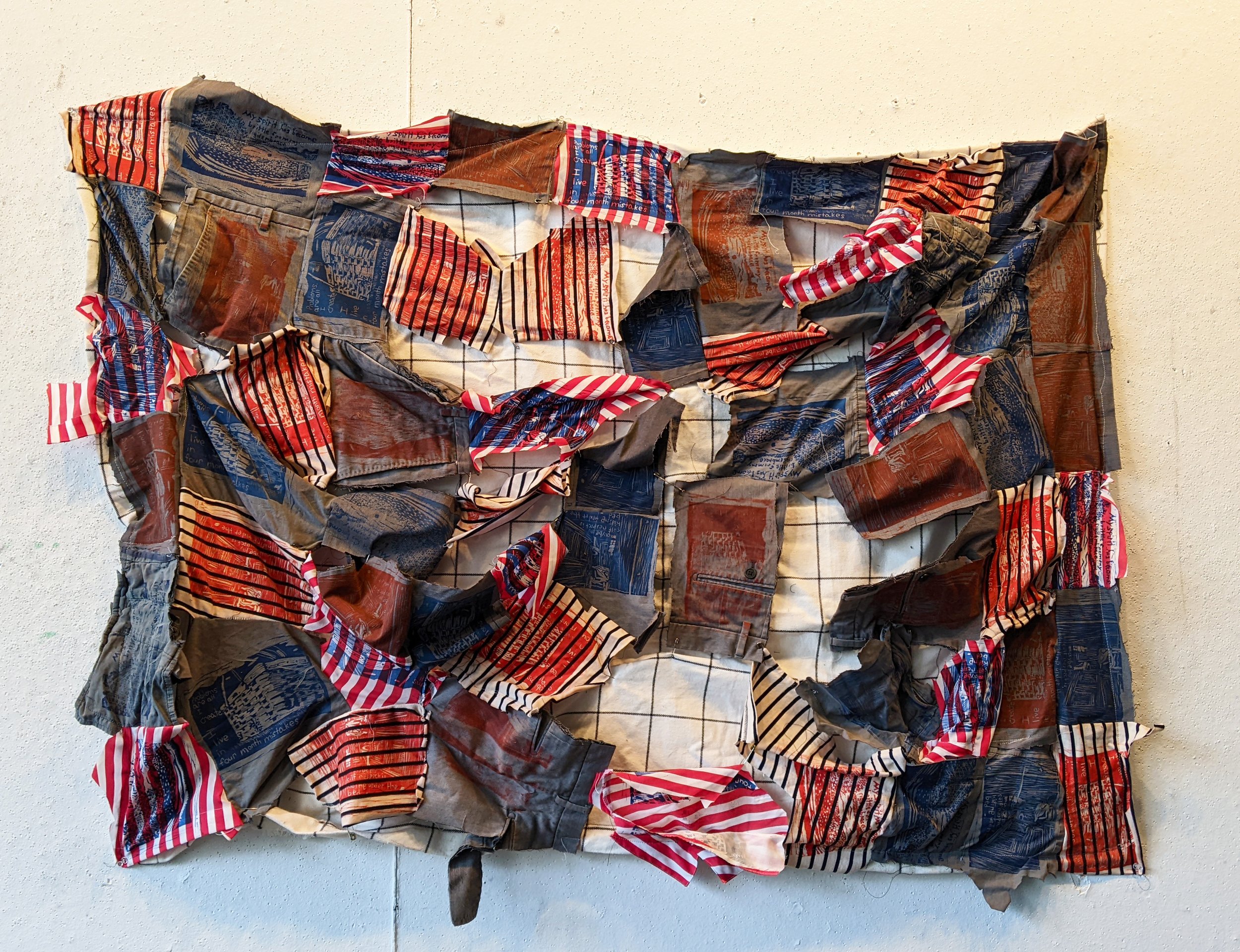
A blanket sewn together from scraps of discarded clothes, printed on with postcard sized relief prints. The prints themselves are from a series of relief prints from places to cry or have an emotional breakdown at. The blanket itself resembles the kind of shabby artifacts commonly seen and used by the unhoused. In this safety blanket the sorrow and anxious emotions described by the postcards serve to protect the wearer. The dinginess of the blanket, combined with the lackluster landmarks depicted in the postcards tell of the decline of small towns in the United States and the ironic meeting of their economic issues with American Exceptionalism and the boisterous nature of the landmarks themselves. Having the world’s largest basket, or largest washboard is an achievement, but it is not one that most people care about when so many within the same towns that have these landmarks are unhoused and unfed. In this way these landmarks, and the blanket itself are perhaps more American than the cultural icons that come to mind when we think of the places depicted in typical postcards around the US.


